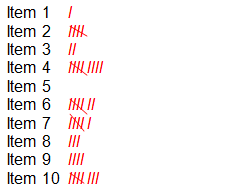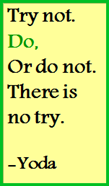 What’s on your “to do” list?
What’s on your “to do” list?
If you don’t have a written list, take a few moments now to write down everything that you want to get done. Get it out of your mind and onto a piece of paper.
Now look at your list. I’m willing to bet that the items on your list are quite varied. It may include simple errands such as “pick up the dry cleaning” and more complex projects like “draft a budget for the kitchen remodel project”. I’m also willing to bet that you feel like your list is a mile long and you will never be able to get it all done.
You are right. And you’re not alone.
This is something that comes up time and time again in the life transition coaching that I do with clients. With so very much to do, it is a real struggle for many people to figure out where to start. Learning to set priorities becomes much easier when they shift to focusing on the Big Rocks first. The Big Rocks are the 20% of the effort that makes 80% of the difference in moving your life forward.
The question is, what are the big rocks? What is the 20%? How do I find these Big Rocks among all the things on my “to do” list?
A Simple Two-Step Process: Sort and Stack
A teacher once told me that most people can’t think about more than 5 things at a time. The people I typically work with – those who are in transition or developing a business – have a lot of things to think about. And you probably do, too.
Here is the two-step process that I teach and use with my clients to help get them through the quagmire of competing priorities. I call it Sort and Stack for short.
Step 1: Sort
Take your long list of things to do, and sort them by priority level – High, Medium and Low. For each item on the list, ask yourself “When I think about what I hope to create in my life, how important is it that this particular task or project gets accomplished?” You should be able to work through this process relatively quickly. Don’t belabor the decision for each item, just go with your first instinct.
When you get done with your Sort, you will have three lists: a list of High priority items, a list of Medium priority items, and a list of Low priority items. Set the medium and low priority lists aside for now.
Step 2: Stack.
Working with the High priority items from your Sort, you will now Stack them – rank them in priority order – using the powerful matched pairs method.
Let’s say you have a list of 10 High priority items in front of you:
Item 1
Item 2
Item 3
Item 4
Item 5
Item 6
Item 7
Item 8
Item 9
Item 10
Start by comparing Item 1 against the Item 2. Which is more important to accomplish based on the objectives you have set for yourself? Which will have the greater impact in moving your life forward and supporting your vision?
If Item 1 is more important than Item 2, place a hash mark next to Item 1, so that your list looks like this:
Item 1 l
Item 2
Item 3
Item 4
Item 5
Item 6
Item 7
Item 8
Item 9
Item 10
If the opposite is true, place a hash mark next to Item 2 instead.
Now repeat, working your way down the entire list, comparing Item 1 to Items 3, 4, 5, 6, 7, 8, 9 and 10, one at a time, placing a hash mark next to the item of greater importance each time.
Now go back and compare Item 2, one at a time, to the remaining 8 items on the list (Items 3, 4, 5 and so on).
Repeat, comparing Item 3 to the remaining 7 items, Item 4 to the remaining 6, and so on until you have gone through all of the items.
When you finish, your list may look something like this:
Finally, Stack the items in your list according to how many hash marks each received, from most to least. In our example:

You now have a prioritized list of your Big Rocks – a ranked list of the 20% of the effort you need to put in to make 80% of the difference in living your life on purpose. Begin by tackling the top item in your stack (Item 4 in our example) and you’re off and running.
Applications of the ‘Sort and Stack’ Method
There is really no limit to how this powerful and simple prioritization process can be applied. I’ve seen this process used for planning vacations (what sites are ‘must-sees’ for our group?), family decisions (how should we spend our family fun time today?), business planning (which activities deserve my attention for business development?), life planning (what are the values that are important to me?) and measurements of success (what things are most important for me to consider myself successful?).
In every case, there will be more things desired than are possible to have or achieve. Using the Sort and Stack process is like saying “I recognize that I may not be able to get everything done, but if I get these things done, I will be happy.” It keeps you focused on having what’s most important (possible) rather than on having everything (not possible). And just as importantly, it gets you out of the land of limbo (inaction) and bypasses the trap of focusing on the little things that don’t make much of a difference.
Now it’s your turn.
What do you find most difficult about taking action on your “to do” list?
Do you have a clear set of prioritized action items that will help you move your life forward?
How could using the Sort and Stack method help you focus on the 20% that makes 80% of the difference?





